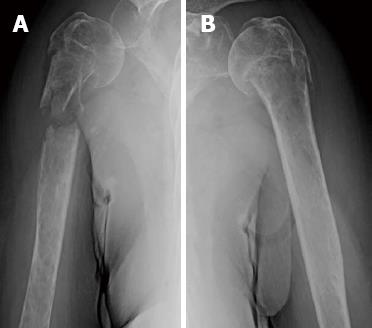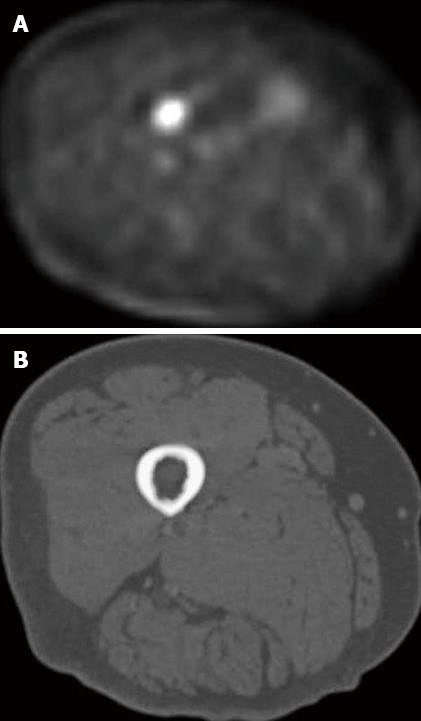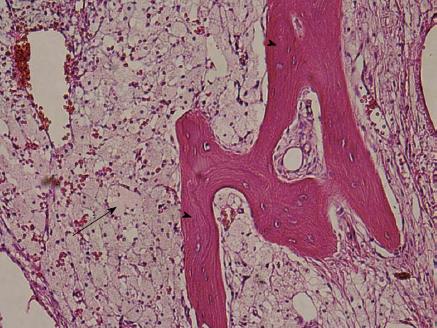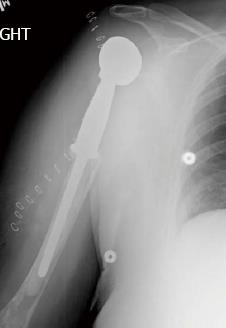Copyright
©2013 Baishideng Publishing Group Co.
World J Radiol. Sep 28, 2013; 5(9): 345-348
Published online Sep 28, 2013. doi: 10.4329/wjr.v5.i9.345
Published online Sep 28, 2013. doi: 10.4329/wjr.v5.i9.345
Figure 1 Anteroposterior radiographs of the humeri, showing bilateral proximal humeral pathologic fractures and underlying aggressive appearing ill-defined permeative lytic lesions, more pronounced in the right humerus.
Figure 2 Positron emission tomography-computed tomography.
A: Axial PET image of the bilateral proximal humeral bones, showing increased uptake of F-18 FDG (arrows) in and adjacent to the fractures; B: Demonstrated on the corresponding CT image (arrowheads). PET: Positron emission tomography; FDG: Fluorodeoxyglucose; CT: Computed tomography.
Figure 3 Positron emission tomography-computed tomography.
A: Axial PET image of the proximal right femur, showing increased uptake of F-18 FDG; B: Corresponding CT with morphologically normal proximal right femur. PET-CT: Positron emission tomography-computed tomography.
Figure 4 Hematoxylin and eosin stained image (× 125 magnification).
The biopsy specimen demonstrating foamy lipidic histiocytic infiltration (arrow) of marrow; Trabeculae are noted (arrowheads).
Figure 5 Lesion was excised, and a long stemmed proximal humerus modular endoprosthesis was inserted.
- Citation: Ali S, Fedenko A, Syed AB, Matcuk G, Patel D, Gottsegen C, White E. Bilateral primary xanthoma of the humeri with pathologic fractures: A case report. World J Radiol 2013; 5(9): 345-348
- URL: https://www.wjgnet.com/1949-8470/full/v5/i9/345.htm
- DOI: https://dx.doi.org/10.4329/wjr.v5.i9.345













